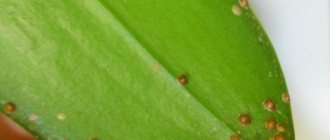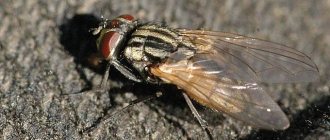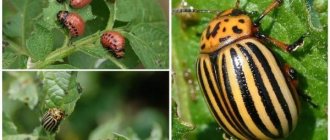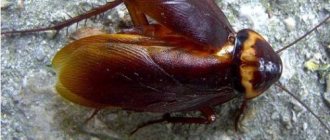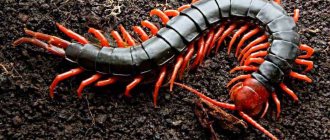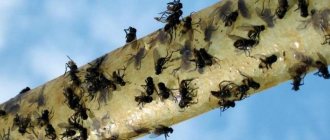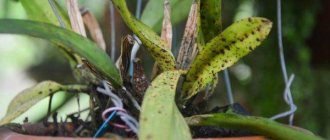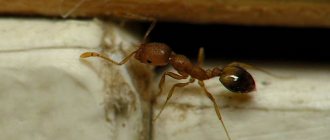Insects: their benefits and harm to humans and nature, habitat
What harm do insects cause?
External influences on the body
In every part of the planet, people have been fighting insects since ancient times, which cause harm to health and cause great damage to the economy.
In rare cases they may be beneficial.
There are a large number of insects harmful to humans. Blood-sucking insects are especially dangerous; they can spread pathogens of dangerous diseases. Aedes mosquitoes spread the Zika virus.
This virus is very dangerous for pregnant women, since the virus is transmitted from an infected mother to the fetus and at birth the child may have microcephaly.
The World Health Organization (WHO) has now banned women from traveling to Central and South America and has also designated the virus as an international threat.
Also, an ordinary fly that has flown into a room can be a carrier of dangerous diseases, including dysentery and cholera.
The tsetse fly causes great harm to the inhabitants of Africa - almost all domestic animals die from its bite, while for humans the bite is not fatal.
Another very serious pest for humans is the typograph bark beetle.
They cause damage to the economy, destroy forests on a large scale, and also destroy wooden buildings.
Only qualified help will solve any problems with insects.
Various types of mosquitoes bring a large number of problems to humans, of which the malaria ones are the most dangerous. Dragonflies and some species of birds help humans in the fight against these insects.
In some regions of Africa there are mosquitoes, the bite of which can cause great pain in both humans and animals.
Large numbers of these insects can enter the mouth and nose, as well as the eyes.
Lice and fleas are also carriers of serious diseases - typhoid.
They are mainly found in animals: cows, pigs, birds and rats.
In livestock farming, horseflies and gadflies cause enormous harm. They cause milk production, as they do not allow animals on pastures to eat normally.
Living in a room with cockroaches and bedbugs also causes great trouble for the owners.
Cockroaches are very prolific, and some of them can carry pathogens of dangerous diseases. Therefore, observing sanitary standards in the room, and, if necessary, carrying out sanitary treatment will help you forget about unpleasant insects once and for all.
The effect of insects on health
Insects are unmatched in their ability to inhabit a wide variety of habitats. If they have adapted to live even in the polar regions, then what can we say about warm and cozy apartments, houses and other premises intended for human life. The presence of these pests in close proximity to people is not only undesirable, but categorically unacceptable due to the fact that they are carriers of numerous dangerous diseases.
First of all, the most dangerous insects are those that belong to the group of ectoparasites, in other words, blood-sucking ones. This group includes bedbugs, fleas, ticks and mosquitoes.
Bedbugs pose a threat to all warm-blooded animals as they are synanthropic organisms. The bed bug is nocturnal, but during the day it hides in books, in cracks, in beds, as well as in all kinds of interior items. But you should not focus only on the above-mentioned biorhythms of this parasite, because if you are very hungry, a bedbug can attack during the day, therefore, you may be at risk of infection 24 hours a day. In addition, when biting a person or animal, the bug secretes saliva, which causes burning of the skin, itching and redness. At particular risk are allergy sufferers, in whom a bug bite can cause anaphylactic shock. Among the diseases transmitted from bedbugs to humans, the most common are tuberculosis, tularemia, leprosy, coxiellosis, and Chagas disease.
Fleas, like bedbugs, can be found at any time of the year. The statement that fleas mainly cause discomfort to pets is not entirely correct. The fact is that about 2000 species of fleas have been described, of which more than 50 species are capable of transmitting various diseases to warm-blooded animals. The scale of the problem is, of course, frightening. Let's narrow our field of interest to one of the most common species harmful to us - the human flea. It is she who, as a carrier, can provoke the appearance of sarcopsillosis and pulicosis in humans. It is also frightening that the human flea is an intermediate host of helminths such as the rat tapeworm.
In the group of ectoparasites, mosquitoes and ticks occupy a separate niche, if only for the reason that they are active during a certain period of time - in spring and summer and are found mainly on the street, although there is a possibility of their penetration into houses and apartments.
Mosquitoes carry bacteria and viruses that are dangerous to humans; it is curious that they are transmitted from person to person without causing any harm to the infected mosquito, and this observation is also relevant to other cases of human contact with harmful parasitic insects. Mosquitoes are a kind of “vessels” for viruses and bacteria that cause malaria, tularemia, and yellow fever.
Ticks have a diverse pathogenic effect on humans; their negative impact is manifested in both ectoparasitism and endoparasitism. Ticks, as ectoparasites, cause skin irritation and dermatitis in people. For those who suffer from allergies, mites and traces of their vital activity can provoke allergic rhinitis and bronchial asthma. Ticks, when biting a person, transmit encephalitis, tularemia, tick-borne typhus (typhus and relapsing), babesiosis, and this is not a complete list.
In addition to insect bites, there is another way of transmitting diseases to humans - contact, which is used by flies, cockroaches and ants.
As you know, the insects listed above are obvious lovers of bread crumbs and other leftover food, and what about leftovers; if insects have a life goal, then the refrigerator door always open for them is precisely it. But between the thorns and the shelves with treats, cockroaches and ants have to make do with food waste, coming into contact with all surfaces on the way to them, for example, with the walls of the garbage chute. Thus, arthropods begin to carry putrefactive bacteria on their paws and antennae, which will very soon end up in places where people live. Note that flies, due to their contact with excrement, among other things, can carry the eggs of parasitic worms. The proximity of cockroaches, ants and flies to a person causes diarrhea and dysentery in the latter.
Understanding the problem of the presence of insects in human life, we once again involuntarily come to the conclusion that it is categorically unacceptable. If you encounter harmful insects, you need to start fighting to destroy them. To prevent this struggle from seeming endless, seek help from qualified specialists - us! And remember, only disinfestation and disinfection in combination will help you not only destroy insects, but also all kinds of viruses and bacteria that they leave behind.
Insect pests of plants
Each order contains insects that, when multiplying en masse, cause significant damage to plants in fields, orchards and orchards. Among orthopterans, such insects include the Asian, or migratory, locust, and the common mole cricket; among bedbugs, the noxious turtle bug.
The Asian locust feeds on various plants, and after its invasion, fields are left bare. The main breeding grounds for locusts are reed beds of large southern rivers. The number of this insect is under constant control of special plant protection organizations. The common mole cricket lives in the soil.
Making nests and making numerous moves, it gnaws through roots and underground parts of stems, eats up tubers, root crops, and seeds.
The pest bug (both adults and larvae) damages cereals, especially wheat. By piercing the grains that have not yet ripened, the bugs inject saliva into them and suck out the dissolved contents.
Among the Coleoptera, the Colorado potato beetle, beet weevil, and click beetle are widespread in fields and gardens.
The Colorado potato beetle is a dangerous potato pest. During the summer, 2-3 generations of beetles develop.
Junior and senior
“In the instructions for the drugs it is often written: effective against younger larvae. Or the dosage is given for some ages. What age are we talking about?”
Article on the topic
Berry crops. How to protect currants from pests
The effectiveness of combating harmful larvae strongly depends on what period of development they are at.
At the appropriate time, a creature emerges from the egg, completely ready for environmental conditions - a larva. She is very gluttonous and begins to eat almost from the moment she is born.
It is characteristic of herbivorous insects with gnawing mouthparts that their larvae, after emerging from the egg, first of all almost completely eat its shell. They do this not only to hide traces of their appearance. The shell contains many proteins that will support the life of the larva until it discovers food. Often, due to high numbers or low amounts of food, females lay eggs quite far from the plants intended for “lunch” for their offspring. In this case, the larva needs a lot of time to get to the “dining room”, so it is vital for it to snack on at least the shell of the egg.
May beetle (larva). Photo: AiF / Nina Belyavskaya
Article on the topic
No pests. How to preserve the harvest of raspberries, strawberries and apples There are pests that spend more than a year or even several years in the form of larvae. This is usually characteristic of large insects or those that spend this phase of development in water or soil. Thus, the larvae of the May Cicada take two or three years to develop, depending on the weather, and the larvae of the seventeen-year cicada take almost 17 years to develop. And this does not mean at all that plant owners can rest all this time. The larvae eat and grow every day! The more they grow, the more they eat. And, if you realize it too late, the damage can be colossal.
The development of larvae is also accompanied by transformations - periodic molting (shedding of integument). Thanks to this, they can increase in size and change. The period of life between moults is usually called instar. Insect larvae usually have several instars (stages of development). There may be two or more than ten. The age of the larvae is most accurately determined by the width of the head capsule (body length is an unreliable indicator: a newly moulted individual is exactly the same in length as before molting). In addition, as the larvae move to the next instar, they may change color or structural features.
Viburnum leaf beetle. Photo: AiF / Nina Belyavskaya
How to fight?
If the number of larvae is small, it is possible to collect manually, shake off plant branches (usually in the lower part of the crown in tall plants and entirely in shrubs and young trees) onto the litter, as well as use hunting belts. In case of medium and high numbers of pests, biological products or pesticides should be used, strictly adhering to the permitted technology and frequency of application. An important detail: the highest effectiveness when using these drugs is observed when treating younger instar larvae (up to the 3rd inclusive). If you find cutworm, moth, and moth larvae on your site, try to determine their “age category” using reference literature. In the case when the larvae have already reached the 4th–5th instar, processing will turn into a pointless waste of money, time and effort - 20–50% of the total number of them will die. The rest will pupate and, although they will have health problems, will develop into adults and produce fertile offspring.
Insects: benefits and harm
Adult beetles and their larvae feed on potato leaves. The beet weevil causes the greatest harm during the period of beet growth. At this time, worm-like larvae hatch from the eggs laid by the female, feeding on its roots. Click beetles damage many crops. Their worm-like elastic larvae - wireworms - bite into potato tubers, carrots, beets, and plant roots.
Of the lepidopterans in fields and vegetable gardens, white butterflies (cabbage, turnip, rutabaga) and winter cutworms cause great harm.
Caterpillars of white butterflies feed on the leaves of cabbage and other cruciferous plants, leaving only large veins. Caterpillars of the winter armyworm live in the soil, where they destroy sown seeds and emerging seedlings, gnaw plant stems at the soil level, and crawling to the surface, eat leaves (they feed on more than 140 species of plants).
Of the dipterans, some flies harm field and garden plants. Female onion flies, for example, lay eggs on lumps of soil near onions or garlic.
The hatched legless larvae bore into the bulbs and green leaves and eat away the passages in them. Damaged plants turn yellow and dry out. Similar harm is caused by cabbage and carrot flies, the larvae of which feed on the roots of cruciferous plants.
Insects are garden pests.
The most common aphids on garden plants are aphids, apple flower beetles, strawberry weevils, and raspberry beetles.
Larvae of the apple blossom beetle develop in unopened flowers of apple trees, eating away the ovaries and stamens, larvae of the strawberry weevil - in unopened flowers of strawberries, strawberries and raspberries, larvae of the raspberry beetle - in raspberry flowers. Butterflies that cause great harm in gardens are the codling moth (caterpillars develop in the resulting apples) and the gooseberry moth (caterpillars live in gooseberries and currants).
Insects are forest pests.
The most dangerous forest pest is the gypsy moth.
The caterpillars of this butterfly feed on the leaves of many trees. During years of mass reproduction of the pest, forest (and garden) trees may completely lose their leaves. May beetles feed on the leaves of oak, birch, and maple, and their larvae, developing in the soil, gnaw the roots of young trees. In coniferous forests, the pine silkworm causes significant damage. The caterpillars of this butterfly damage mainly pine, less often spruce and larch. Bark beetles settle in the bark of weakened trees.
Ecological chain of insects and plants
The better we understand natural processes, the more surprising discoveries we make. They persistently convince that in the living world there are unified control systems and mechanisms for preserving all its species on Earth and ensuring general ecological balance. In order to realize the targeted impact of these systems, all representatives of the living world are provided with amazing capabilities. An example is the ability of seemingly defenseless plants to prevent excessive losses from insects. They do this not only through chemical protection, but also through information exchange. Previously, it was believed that such “simple” organisms as plants cannot have a communication system, and their self-defense is not purposeful. But gradually startling facts began to emerge. It turns out that plants are given the ability to defend themselves, “warn neighbors” about attacks from enemies, and even “call friends for help.” For this purpose, special chemicals are synthesized - pheromones and poisons. The former are a means of “chemical communication,” while the latter either cause digestive upset in plant enemies or kill them. It is thanks to the wise genetic program embedded in the plant body that both their targeted protection from extermination and the preservation of ecological balance in nature are carried out. Let's look at these properties using examples.
Measures to reduce the number of insect pests
On the territory of our country there are about 700 species of insects - dangerous pests of agriculture and forestry.
To reduce their numbers, various methods are used: mechanical (crushing the eggs of the cabbage butterfly, destroying beet weevils in trap ditches, etc.), agrotechnical (sowing or planting plants so that they have time to get stronger and become tougher to the appearance of pests, cleaning the bark on the trunks of fruit trees, regularly collecting fallen fruits, etc.). In case of mass reproduction of pests, chemical methods are used: pollination and spraying of plants with toxic substances (in this case, unfortunately, many insects, earthworms, and birds die).
Nowadays, biological methods of plant protection are becoming of great importance: the protection and attraction of insectivorous birds, bats, the use of biological preparations that cause diseases of insect pests, as well as the breeding and use of other insects - natural enemies of insects that harm plants.
In the latter case, some predatory insects, egg eaters and riders are used.
Predatory insects.
Many types of insect predators provide great assistance in controlling the number of plant pests. Predatory ladybugs (seven-spotted, two-spotted, etc.) eat aphids, ground beetles eat various caterpillars. The larvae of these insects are also predators. Red forest ants protect the forest from various insect pests.
Equestrians and egg eaters.
The females of many ichneumonids (the white ichneumon waster, the aphid ichneumon) lay eggs in the body of young caterpillars or in the body of aphids.
The larvae emerging from the eggs lead a parasitic lifestyle, and then emerge from the body of the dying host and pupate. The egg eater Trichogramma lays eggs in the eggs of more than 80 species of butterflies, and the egg eater telenomus lays eggs in the eggs of pest bugs.
Trichogramma are bred in special laboratories on grain moth eggs and released into gardens and fields.
Insects are carriers of pathogens and parasites of humans and animals
Orchids are for insects, insects are for orchids
Orchids are primarily valued for their beauty. Their flowers can be single or collected in inflorescences. The stamens usually grow together and with the pistil into one column. And one of the six petals is different from the rest and is called the lip. The lip of each type and variety of orchid comes in a very different color, with unusual patterns and spots. It is this petal that attracts insects that pollinate it. Among orchids, there are also species that can only be pollinated by one type of insect, and these insects, in turn, can pollinate only one type of orchid. Such cooperation, when two living organisms cannot exist without each other, is called symbiosis.
Butterfly pollinating exotic orchids
Insects are carriers of human pathogens
Some insects, especially blood-sucking ones, are carriers of pathogens that cause dangerous diseases in humans and animals.
House flies that fly into a person's home carry pathogens of typhoid fever, dysentery, cholera and other dangerous diseases, and roundworm eggs on their paws from sewage to food (available for them to visit).
Malaria mosquitoes carry malaria pathogens.
They can be distinguished from other mosquitoes by their position: the common mosquito holds its body parallel to the surface on which it sits, while the malaria mosquito holds its body at an angle. The larvae of the malaria mosquito, having risen to the surface of the water, hold their body parallel to the surface film, and the larvae of the common mosquito - at an angle to it. The number of mosquitoes is reduced by draining swamps and breeding fish that eat mosquito larvae and pupae.
Their natural enemies are of great importance - insectivorous birds (swallows, swifts) and dragonflies.
Dangerous blood-sucking insects include lice and fleas. The human louse parasitizes humans. Lice cause severe itching in humans. When feeding, they can transmit typhus pathogens to the host. Fleas are carriers of plague pathogens. Plague microbes enter their bodies by sucking the blood of sick rats, gophers and other rodents, as well as people.
Parasitic diseases
Diseases transmitted to animals through arthropods are called vector-borne diseases . Skin diseases of wild and domestic animals are marked by loss of hair and plumage, severe itching, formation of seals on the skin, and peeling of the integument. The general name for such diseases is arachnosis. Arachnosis affects pets, cattle, pigs, horses, and sheep. Similar diseases are also found in wild mammals. The consequences of cutaneous parasitic diseases are:
- anxiety;
- weight loss;
- hair loss;
- decreased productivity, etc.
Scabies
The causative agents of this dangerous and contagious disease are numerous representatives of ticks. The parasites are very small and almost invisible to the eye. Scabies is accompanied by inflammatory skin lesions, itching, bloody scratching, and eczema. Any mammal can get sick, but horses, sheep, and pets are especially affected.
The most common scabies diseases:
- Otodectosis (ear scabies). Caused by the mite Otodectes cynotis, which infects the external auditory canals. A dark brown liquid is released from the damaged areas, which dries out and forms crusts and scabs. With otodectosis, animals scratch their ears furiously and shake their heads. Scratching leads to the formation of bald patches and wounds. Through the latter, there is a high risk of secondary infection, which contributes to serious damage to the eardrum and inflammation of the inner and middle ear. Cats, dogs, and domestic rodents are at risk. Transmission of the pathogen occurs through contact of sick pets with healthy ones.
- Cheyletiellosis, or wandering scabies, demodicosis (damage to the sebaceous glands and hair follicles), sarcoptic mange (acarosis). Inflammations appear on the animal’s body and limbs. Depending on the specifics of the pathogen, scales, ulcers, and pustules form on the body. Notoedrosis. With this disease, the parasites are localized in the head and neck area. The skin turns red and the fur becomes dull. Ultimately, hair loss occurs. The most vulnerable are cats, rabbits, and dogs.
- Psoroptosis is a mite infection of the inner surface of the ears, as well as areas with long hair (back, base of the tail, withers). Rabbits, goats, horses, and cows are especially susceptible to this disease. The infection is transmitted through equipment and through contact with sick animals. The mild form of the disease is focal in nature and occurs as weeping eczema. A complication of the disease occurs when pathogenic microflora penetrate through the skin damaged by scratching and sores, as a result of which inflammation can affect the central nervous system.
- Knemidocoptic mange (foot mange, calcareous foot) is an avian disease. It affects parrots, chickens, turkeys, pheasants, geese, quails, passerines, etc. There are two types of pathogens: parasitic in open areas (legs) and living under the feather cover. The disease is characterized by itching, dermatitis, necrosis of the fingers (sometimes the beak). First, a grayish coating appears on the limbs, tarsus, and near the beak, and after a few days the epidermis grows: deformed growths appear on the head, wax, and paws. Feathers fall out around the affected areas. Itching in the affected areas leads to bloody scratching. Sick birds have decreased appetite, which affects egg production. Diagnosis of the disease is complicated by a long latent period. Activation of the parasite occurs when immunity decreases and hypothermia.
Siphunculatosis (lice)
Lice are characterized by dermatitis, itching, anxiety, and decreased productivity. There are 486 known species of these insects. There are 19 parasitic species in Russia.
Insecticides against pests at home are the most effective way to control insects, although not the safest.
Sunflower suffers from pest attacks no less than other field crops. Read this article about which insects this plant should be protected from.
Bees are not only hard-working insects that bring honey - they also perform other functions. Which ones - read about it at the link.
Mallophagoses
This is the general name for diseases caused by lice-eaters and feather-eaters. The activity of pathogens is accompanied by severe itching, hyperkeratosis (thickening of the stratum corneum), restlessness, partial loss of feathers, loss of weight and egg production.
Parasite attacks are especially dangerous during the molting period, since young plumage and fluff are destroyed.
Entomoses
This group of diseases of wild and domestic animals is caused by dipterous insects, the larvae of which live and feed in the subcutaneous and internal tissues:
- Hypodermatosis is a disease in which nodules with botfly fly larvae located inside are formed on the body of animals. Caterpillars cause inflammation of the subcutaneous tissue, pierce the skin, causing severe suffering to animals, leading to exhaustion and sometimes death.
- Oestrosis is a disease characteristic of artiodactyls. The larvae of the botfly fly accumulate in the choanae, nasopharynx, and at the entrance to the esophagus. Moreover, they can penetrate the frontal sinuses and cause inflammation of the meninges. Irritation of the mucous membranes of the nasopharynx by parasites contributes to the abundant secretion of thick gray mucus. Animals have difficulty breathing, coughing, and anxiety. Scratching appears in the area of the nasal passages. There are known cases of cattle dying from suffocation.
- Myiases. Fly larvae swallowed by animals remain viable and develop in the digestive system of the host, causing various intestinal inflammations. Only a veterinarian should diagnose a sick animal. In most cases, the type of parasite can be determined exclusively by laboratory research methods.
Insects parasites of domestic animals
Horseflies and gadflies cause great harm to livestock.
Female horseflies suck the blood of animals. When there are many of them, cows, sheep, and goats eat poorly on pastures and reduce milk yield. Gadflies have undeveloped mouthparts and do not feed. The larvae of many species of gadflies are parasites of animals and humans. Female bovine botflies attach their eggs to the fur of cows. The hatched larvae penetrate the skin, make their way deeper and pass through connective tissue layers through many internal organs.
Grown-up larvae migrate under the host's skin and cause the formation of purulent nodules with fistulas. At the end of development, they fall out of the nodules and pupate in the soil. Domestic animals are parasitized by lice (pig, cow, dog), fleas (dog, rat, bird).
Tireless soil formers
The enormous diversity of insects is determined by the special functions each species performs to maintain natural ecological balance. For this we need pollinating insects, soil formers, orderlies and representatives of other “professions” who perform important economic work on Earth.
Many insects, due to their ability to process dead vegetation, are excellent soil formers. Experiments have established that leaves that were subjected to decomposition by microorganisms retained their structure for three years. But as soon as the fungus gnat laid its eggs on them, the leaves turned into humus in three days. And where there are no litter destroyers, as, for example, in the zone of coniferous forests, fibrous peat-like infertile layers accumulate.
Some groups of insects quickly destroy dead tree trunks, maintaining the cycle of substances in nature. In the tropics, practically the only soil-forming insects are moisture-loving termites, which process all dying wood and plant debris in forests. In addition, termites lower the soil with their numerous moves and move it in different directions, mixing the layers. By passing plant foods and soil through the intestines, they actively influence the processes occurring in the soil. Termites themselves provide a fairly high-calorie food source for many animals. Despite the fact that human interests collide with the activities of termites (insects destroy wooden buildings of people), the role of termites in the life of tropical nature is undoubtedly enormous.
Garden pests
If holes, brown or yellow spots appear on the leaves of garden trees, leaf blades become twisted, and the fruits become wormy, it means that the plants have been attacked by pests. Types of insect pests:
- Aphid. A sucking insect that attacks berry crops and trees: pear, plum, apple, cherry. The aphids suck out the juice, after a while the leaves wither, wrinkle, and the crop begins to dry out. In addition, the pest is a carrier of viral diseases - the leaves are infected by black mold. To protect plants from enemies, they attract ladybugs that feed on aphids, or treat the trees with a solution: soak tobacco dust in water (1 to 10) and add 50 g of soap.
- Codling moth. A gnawing pest that destroys the fruits of pears, apple trees, plums and peaches. Affected fruits do not have time to ripen and fall from the trees prematurely. In this case, the yield is reduced by 65%. The codling moth caterpillar is light yellow in color, about 2 cm in size. It overwinters under the bark of old trees or in the soil. Scientists have shown that the offspring of one pair of butterflies can damage up to 900 fruits. To combat the codling moth, a decoction of wormwood is often used. The herb (1 kg) is poured into 1 liter of water and boiled for 30 minutes. After cooling, dilute 10 liters of water.
- The scale insect or shield aphid is a sucking pest. Its size varies from 0.5 to 5 mm, the body is protected by a waxy shield. If a plant is attacked by colonies of parasites, it becomes covered with a continuous layer of insects. The development of young shoots and branches stops, the crop weakens, and the top dries out. The bugs become so embedded in plant tissue that it is necessary to use mechanical methods of destruction: scraping them from the trunk or cutting off the affected parts of the crop.
Sometimes they resort to extreme measures - they destroy all infected trees. Traditional methods that have been proven by gardeners for decades help to get rid of scale insects. One of them: 3-4 kg of fresh celandine is infused in 10 liters of water for 24 hours, after which the affected trees are treated.
